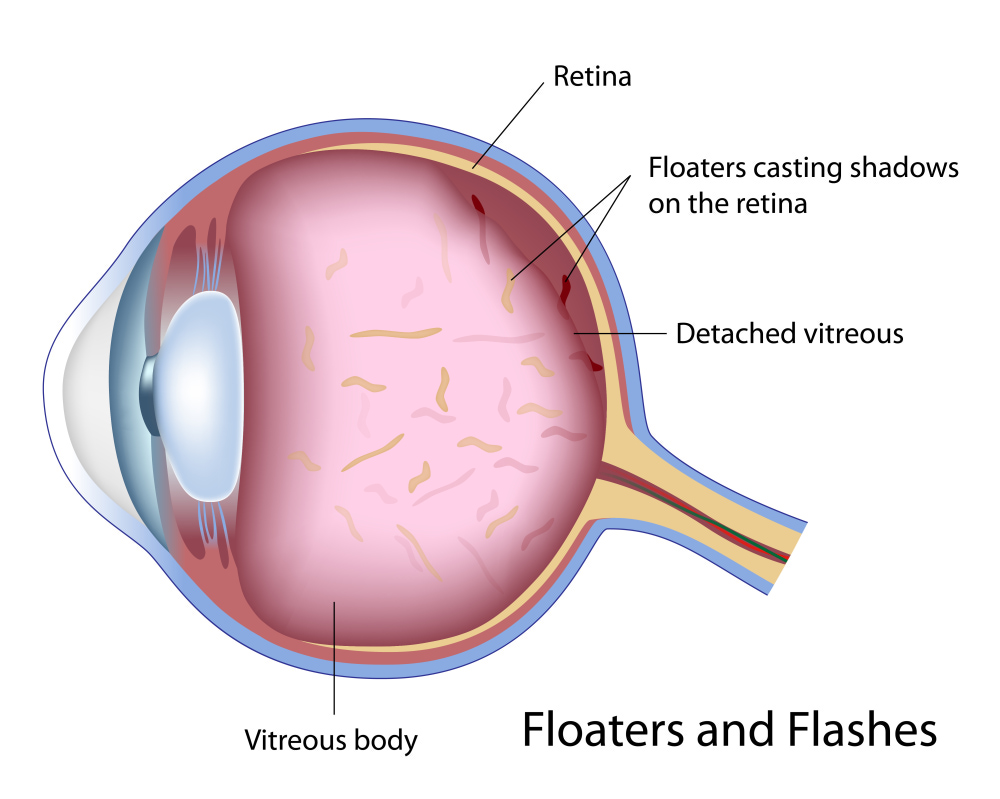What are eye floaters?

At first, you’re not quite sure whether you’re ‘seeing things’… you know, that spot that appears as you turn your head. Eventually, you realise that the ‘thread’ that floats in and out of sight isn’t going away.
This is an ‘eye floater’. To understand what an eye floater is, it is necessary to understand the vitreous.
The vitreous is clear gel that fills the space between the lens and the back on the eye. The vitreous is 98% water but it contains protein fibres which make the gel much thicker than water.
As we get older - so does the vitreous!
Gradually, the gelatinous mixture shrinks and the protein fibres begin to clump together forming clusters which float freely though the liquefied vitreous.
These freely floating clusters are ‘eye floaters’.
What do eye floaters look like?
Eye floaters come in various shapes and sizes. Some people see tiny spots or flecks. To others, the eye floater appears to be a ‘thread’ or a ‘web’. Still others see them as clear little bubbles. Many people have a combination of shapes and sizes.
Eye floaters are particularly visible when looking at a blank wall or a blue sky. They move as the eye moves, often with a ‘delayed reaction’.
You are actually seeing the shadow from the floater on the back of the eye.
Are eye floaters dangerous?
Most eye floaters are harmless and it is extremely rare that an eye floater will affect a person’s vision.
Light flashes and eye floaters
If there is a sudden increase in the number of eye floaters – for example, if a ‘curtain’ comes down in one field of vision – this can indicate a medical problem such as a vitreous detachment. If a person experiences any sudden flashes of light in conjunction with eye floaters, it is important to seek medical attention as soon as possible, as there may be damage to the retina.
Conclusion
Most eye floaters are a natural part of life. Most people learn to happily co-exist with their collagen clumps floating freely through a liquefied vitreous and casting shadows on their retina.



 Buy Contact Lenses
Buy Contact Lenses Book an Appointment
Book an Appointment